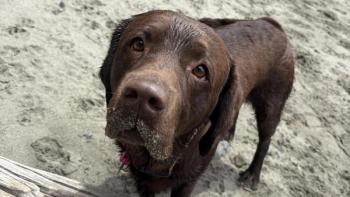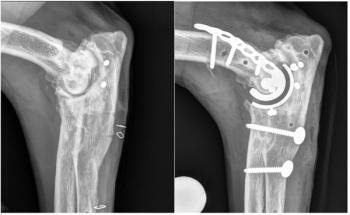
Fetch 2018: Behavioral Treatment Plans Simplified
Because physical issues in pets can manifest as behavioral problems, always complete a thorough workup when presented with a seeming behavioral issue.
According to Lisa Radosta, DVM, DACVB, owner of Florida Veterinary Behavior Service in West Palm Beach, Florida, the interplay between medical and behavioral disorders means that both physical and mental health should be considered for almost all presentations of apparent behavior issues. At the 2018 Fetch conference in San Diego, Dr. Radosta advised first examining the patient and treating whatever physical concerns can be treated—taking into consideration the pet’s age, duration of the problem, onset and progression of the behavior, and the pet’s environment—and then moving on to address the behavioral issues.
When writing a behavioral treatment plan, she advised, choose the desired outcome first, and then write your plan to achieve that outcome. There are 2 general treatment options:
- Medication and management: Management can include distraction, avoidance, collars, wraps, music, and a sanctuary room, among other things.
- Medication, management, and behavioral and/or cognitive treatments: Behavioral/cognitive treatments include desensitization (DS) and counter-conditioning (CC), as well as control training.
Dr. Radosta emphasized that technicians should be doing everything that is not doctoring, including explaining to clients how to execute the treatment plan. “Veterinarians don’t have to know how to run the machine; they just need to know which machine to run,” she said. In other words, once you determine the best treatment plan, leave it to your skilled technicians to execute the plan with clients.
Among the many behavioral problems Dr. Radosta discussed were noise phobias, separation anxiety, and aggression.
Noise Phobia
- Desired outcome: Dog will not panic during fireworks or other noise events.
- What your technician should do: Educate the owner about any prescribed medication, the pet’s stress response, and appropriate owner-dog interactions (ie, what owners should and should not do to correct or control the behavior). Teach the client to provide the pet with a sanctuary room, food toys, and other distractions when a noise event is imminent. Because the goal is to change the pet’s physical response to the noise stimulus, a relaxation protocol with DS and CC is appropriate.
Separation Anxiety
- Desired outcome: Dog will be calm when alone.
- What your technician should do: Educate the client about the pet’s stress response and appropriate dog-owner interaction, as well as any medication prescribed. Advise the owner to provide the pet with Kong dog toys for distraction before the animal gets upset; day boarding is another option. Medication alone is unlikely to be sufficient for managing separation anxiety, so it is important to change the pet’s response to the stimulus by incorporating DS and CC to departure cues.
General Aggression
- Desired outcome: Dog will not bite, snarl, or growl.
- What your technician should do: Because most clients are less likely to believe recommendations from a technician than a veterinarian, for pets with aggression the veterinarian should explain the treatment process and the potential for client liability should the dog hurt someone. It is important to talk to the owner first about management and avoidance, then make a separate appointment to discuss humane control tools, which can include distraction (eg, food toys) and separation (eg, baby gate).
Conclusions
Dr. Radosta emphasized the importance of utilizing skilled technicians in behavioral cases to explain to owners how and why behavior modification works. In addition, reevaluate the pet every 6 weeks. When behavioral modifications are not leading to effective change and/or new physical evidence becomes available, reconsider the behavioral diagnosis.
Newsletter
From exam room tips to practice management insights, get trusted veterinary news delivered straight to your inbox—subscribe to dvm360.






